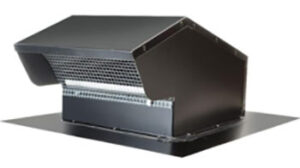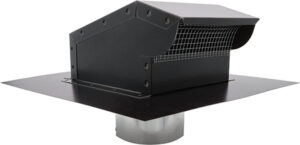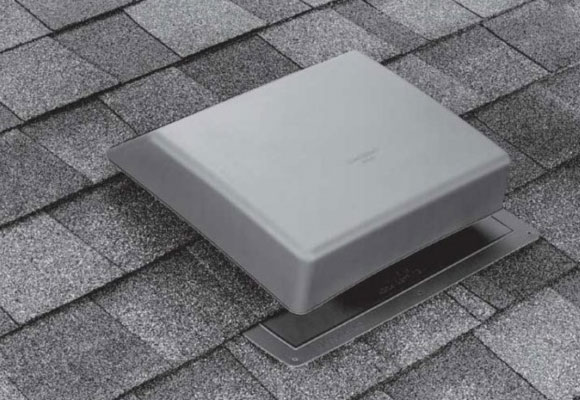Double-wide roofs have gained immense popularity due to their expansive design and cost-effectiveness.
Like any other structure, their longevity and efficiency depend significantly on proper ventilation.
Here, we provide an authoritative guide, crafted by experts, on the best ways to vent a double-wide roof.
Why is Roof Ventilation Important?
Before diving into the “how,” let’s briefly explore the “why” of roof ventilation:
- Roof Longevity: Adequate ventilation prevents shingle blistering, helps deter mold growth, and protects your roof from premature deterioration.
- Energy Efficiency: Properly vented roofs can contribute to reduced energy bills. It minimizes the burden on your cooling or heating systems.
- Indoor Comfort: A well-ventilated roof ensures a balanced temperature throughout your home.
- Moisture Control: It prevents condensation buildup, thus shielding your home from potential water damage.

Essential Components of Double-Wide Roof Ventilation
The ideal double-wide roof ventilation system hinges on two pivotal components: intake vents and exhaust vents.
- Intake Vents: Positioned at the lowest eaves of your roof, these allow fresh air to enter, ensuring a regulated humidity level. Examples include soffit, eave, and fascia vents.
- Exhaust Vents: Found at the highest point of your roof, they expel the warm indoor air. The ridge vent is a popular choice for this purpose.
Best Practices for Double-Wide Roof Ventilation
Adhering to best practices can elevate the efficiency of your ventilation system. Here’s what experts recommend:
- Ensure a Balanced System: Strive for a 1:1 ratio between intake and exhaust vents. This ensures optimal airflow.
- Ventilation Area: A general rule of thumb is to provide 1 square foot of ventilation for every 300 square feet of attic space.
- Clearance Maintenance: Maintain a minimum of one-inch clearance between roof insulation and the roof deck to guarantee seamless airflow.
- Weather Guard: Ensure your vents are equipped to handle underlying weather conditions and keep out unwanted pests.

Installing Ridge and Soffit Vents
Combining ridge and soffit vents is a widely recognized method for double-wide roof ventilation. Here’s a concise guide:
- Installation Point for Ridge Vents: These should be installed at the peak of your roof, allowing warm air to escape.
- Installation Point for Soffit Vents: Placed in the eaves of your roof, these permit cold air intake.
Steps:
- Measure & Mark: Calculate the ridge length and mark where the vent will go.
- Cut Opening: Cut along the marked line, ensuring it’s wide enough for the vent.
- Install Soffit Vents: This can be done by cutting appropriately sized holes in the soffits and securing the vents in place.
- Position & Secure Ridge Vents: Once your soffit vents are in place, align the ridge vent on the previously cut opening and fasten it securely.
Expert Tip: Ensure the ridge vent is positioned to prevent water leakage.
Benefits of Double-Wide Roof Ventilation
- Enhanced Roof Lifespan: Proper ventilation protects your roof from various damages, significantly extending its life.
- Improved Air Quality: Efficient ventilation aids in diluting polluted air before it permeates your living space.
- Optimal Temperature Regulation: A well-ventilated roof ensures consistent temperatures, enhancing indoor comfort.
- Cost-Effective: Not only does it reduce energy bills, but it also decreases the potential costs linked to roof repairs.
Roof Ventilation Enhancements
- Kitchen Exhaust Fans: It’s crucial to vent kitchen exhaust fans effectively, ensuring the swift expulsion of cooking fumes and heat. Explore the best methods and products for a roof vent for a kitchen exhaust fan and improve indoor air quality.
- Metal Roofs: While we’ve discussed double-wide roofs, specific nuances come with venting metal roofs. They have distinct requirements, and understanding how to vent a metal roof properly is essential for durability and efficiency.
- Vented Drip Edge: A vented drip edge offers an innovative way to improve ventilation, but like all solutions, it has its challenges. Delve into vented drip edge problems to be aware of potential pitfalls and how to address them.
Why Trust this Guide?
The information laid out in this article is rooted in scientific consensus and best practices in construction and roofing. Our expertise in this domain ensures that you receive data-backed, actionable insights.
Wrapping Up
With its expansive space, a double-wide roof demands a precise ventilation strategy to ensure longevity and functionality.
Using the expert-backed methods detailed above, you can ensure optimal airflow, energy efficiency, and a healthier living environment.
Remember, your roof does more than shield you from the elements; it breathes, regulates, and protects your home in myriad ways.
Proper ventilation is the key to unlocking these benefits.
A holistic understanding of roofing goes beyond just understanding the type or design.
Every detail matters, from the materials used to the techniques applied and the challenges faced.
The interlinked articles provide a comprehensive insight into these details, ensuring you’re well-equipped to make informed decisions.
Whether it’s your home’s roof or a specialized structure like a shipping container, there’s expertise available to guide you every step of the way.

Arthur is a skilled roof worker with over 10 years of experience in the industry. He started his career as an apprentice and worked his way up to become a foreman.
When he’s not working on roofs, John enjoys with his family or writing posts. He is also a passionate cyclist.

